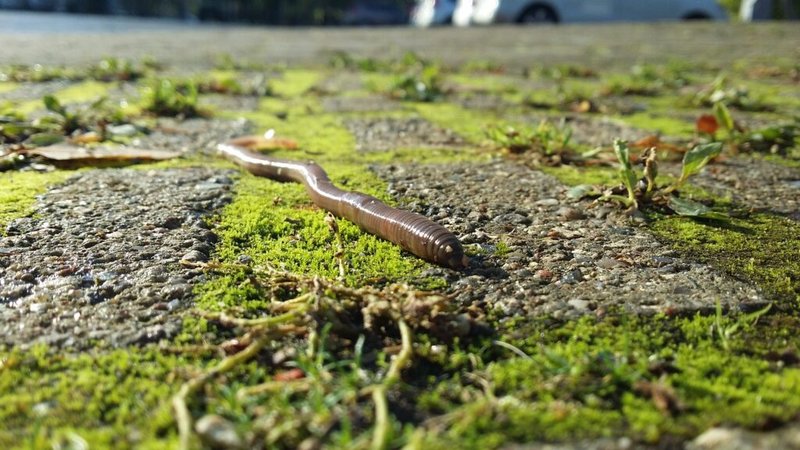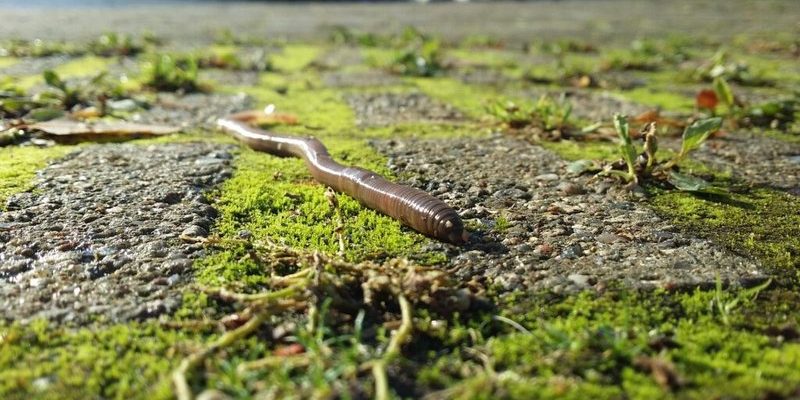
Inchworms, also known as loopers, belong to the caterpillar stage of certain moths. They’re famous for their unique locomotion, which makes them look like they’re inching along. But before you dive into setting up an observation terrarium, you might be wondering if inchworms are the right fit for this kind of environment. Let’s explore everything you need to know to make your inchworm observation a success.
What Are Inchworms?
To really appreciate inchworms, it’s essential to know who they are. These little guys are the caterpillar forms of moths, primarily from the Geometridae family. They typically have a green or brown coloration, allowing them to blend seamlessly into their surroundings—perfect for avoiding predators.
What sets inchworms apart from other caterpillars is their unique way of moving. They curl up their bodies, creating a loop that allows them to “inch” forward. This movement not only makes them look adorable but also serves as a clever defense tactic, as they can mimic twigs or leaves when threatened.
Inchworms eat leaves from various trees and shrubs, primarily those of deciduous plants. Not only does this diet support their growth, but it also means you’ll need to provide fresh foliage in their terrarium to keep them happy.
Setting Up the Perfect Observation Terrarium
Creating a comfortable space for your inchworms is crucial. An observation terrarium can be as simple as a glass jar or a more elaborate setup with a clear container that allows for easy viewing. Here’s how to set it up:
1. **Choose Your Container**: A glass jar or a small aquarium works well. Just make sure it has enough ventilation—inchworms need fresh air to thrive.
2. **Add Substrate**: Layer the bottom of the container with soil, sand, or even shredded leaves. This not only looks natural but can also help retain moisture.
3. **Include Foliage**: Since inchworms munch on leaves, include a few branches with fresh, pesticide-free leaves. Hickory, oak, and maple are popular choices. Just make sure the leaves are the right type for your inchworm species.
4. **Maintain Humidity and Temperature**: Inchworms prefer a slightly humid environment. You can lightly mist the terrarium with water, but be careful not to soak it. Keep the terrarium in a warm location, away from direct sunlight, which can overheat the container.
Caring for Your Inchworms in a Terrarium
Once your terrarium is set up, it’s time to focus on care. Here are some key things to keep in mind:
– **Feeding**: Regularly check and replace the leaves. Inchworms eat a lot but only need fresh leaves to stay healthy. Remove any wilted or spoiled foliage to keep the space clean.
– **Monitoring Health**: Look for signs of a healthy inchworm—active movement and a good appetite. If they become sluggish or stop eating, it might indicate an issue with their environment or food.
– **Cleaning**: Every few weeks, clean the terrarium to prevent mold or pests. Gently remove old leaves and any waste. You don’t want to stress your tiny inhabitants with drastic changes, so keep cleaning to a minimum.
Common Challenges with Keeping Inchworms
Like any pet or project, keeping inchworms in a terrarium comes with its own set of challenges. Here are a few you might encounter and tips for overcoming them:
– **Temperature Fluctuations**: If your terrarium gets too hot or cold, it could stress your inchworms. Keep an eye on the temperature and adjust the position of the terrarium if necessary.
– **Overcrowding**: While it might be tempting to keep several inchworms in one space, too many can lead to competition for food and resources. Start with a small number and see how they thrive before adding more.
– **Mold Growth**: Moisture is essential, but too much can lead to mold. If you see any mold, reduce the humidity and remove any moldy organic matter, as it can harm your inchworms.
Understanding the Life Cycle of Inchworms
Watching inchworms grow is part of the fun! Understanding their life cycle helps you appreciate the journey they undergo.
– **Egg Stage**: Inchworms start as tiny eggs laid on leaves or branches. Depending on the species, these eggs can take days to weeks to hatch.
– **Caterpillar Stage**: Once hatched, they enter the caterpillar stage (which is what you see in your terrarium). They grow by shedding their skin several times, a process called molting.
– **Pupa Stage**: After reaching a certain size, inchworms will find a safe spot to pupate. They can either spin a cocoon or simply attach themselves to a surface.
– **Adult Moth Stage**: Finally, they transform into adult moths. This stage can last for a few days to weeks before they reproduce, starting the cycle all over again.
Are Inchworms Suitable for Observation Terrariums?
So, can inchworms really thrive in observation terrariums? The answer is yes! With the right setup and care, they make fascinating pets. Observing their growth and behavior can provide insights into their fascinating lives, making it an educational experience for both kids and adults.
However, it’s important to remember that they require specific care and attention, especially concerning their diet and habitat. If you’re prepared to invest a little time into maintaining their space, inchworms can become a captivating addition to your mini-ecosystem.
Closing Thoughts
Keeping inchworms in an observation terrarium can be a rewarding endeavor. You’ll not only get to enjoy watching them but also learn about their intriguing life cycle and behaviors. As long as you’re ready to provide a suitable habitat and care for their needs, inchworms can thrive in your terrarium. So go ahead, set up your little world, and get ready to witness the wonders of nature right from your home! Happy observing!

